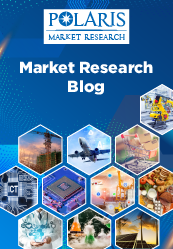Government initiatives aimed at spreading awareness about lewy body dementia treatment uphold market
Lewy Body Dementia (LBD) is a common type of progressive dementia in which abnormal protein deposits develop in the brain. These deposits gradually affect the brain whose changes later on lead to major problems impacting a person’s movement, behavior, and thinking abilities. This disease is typically found in people having 50 years of age or older, although younger people also have it. The abnormal microscopic deposits slowly impact the functioning of the brain and get worse with time. The treatment used for such diseases requires continuous multidisciplinary care from medical experts.
The global Lewy body dementia treatment market is witnessing substantial growth owing to the increasing awareness about the newly developed therapies that come with high therapeutic effects. Additionally, the increasing aging population worldwide, rise in the cases of Lewy body dementia, and growing government aid to lower the incidence of this disease is complementing the growth of the market. Furthermore, rising robust research activities and the adoption of technological advancements supported by the increasing investments from public-private organizations are creating lucrative opportunities for market players to take progressive things in the field.
Impact of COVID-19 Pandemic on Dementia Patients
People living with dementia are at a higher risk of COVID-19 as this disease is itself a pandemic in the aging population. Recent studies conducted on the patient with Parkinson’s disease (PD) and COVID-19 discovered that people struggling with PD for a longer duration are vulnerable to contracting COVID-19. Reducing unnecessary hospital admissions is crucial, as the change in routine and environment is likely to create confusion in people dealing with DLB.
North America Set to Dominate the Lewy Body Dementia Treatment Market
Based on the regional outlook, North America is anticipated to account for the largest share of the global Lewy body dementia treatment market. The market growth is attributable to the growing prevalence of dementia and increasing cases of Parkinson’s and Alzheimer’s in the region. In addition to this, the presence of leading market players, successful awareness programs run by these players, and availability of effective drugs to manage LBD are some other key factors fueling the market in the region. In the Asia Pacific, the market for Lewy body dementia is projected to grow at a significant rate, owing to the rising geriatric population and entry of industry giants in the regional market.
Strategic Collaborations among Market Participants Changing Market Dynamics
Several key partnerships take place among patient advocacy groups, medical experts, government bodies, and pharmaceutical companies working in the target market. Such strategic collaborations have fostered activities for drug development and improved access to the expert case. In addition to this, these alliances are also helping to reduce clinical barriers in clinical research.
The rise in the aging population worldwide has resulted in a gradual increase in the patient pool for the dementia treatment market. Leading manufacturers are developing new products especially for curing Lewy body dementia. To capitalize on the major shift in the healthcare patterns, companies are bringing diversifying treatment options. Scientists in the United Kingdom and Portugal conducted a study and confirmed that imaging technique that is used to trace the brain for neuronal dopaminergic deficiency also able to differentiate dementia from Lewy. This could be a crucial inference for specific management of patients struggling with these conditions.
Deep-dive Insights on Lewy Body Dementia Treatment Market by Polaris Market Research: https://www.polarismarketresearch.com/industry-analysis/lewy-body-dementia-treatment-market


